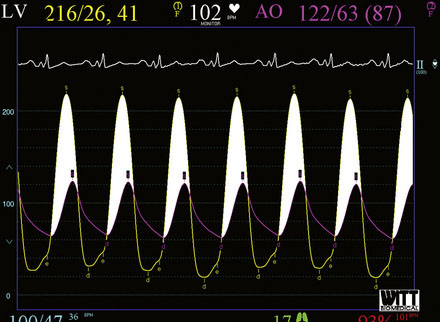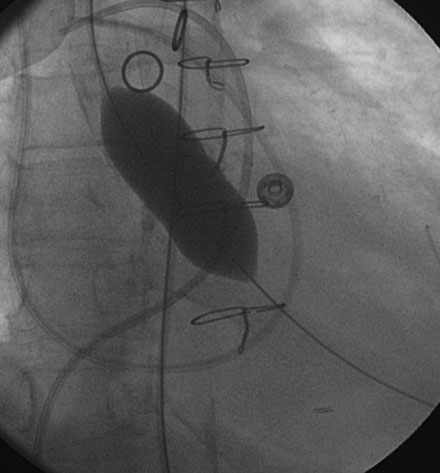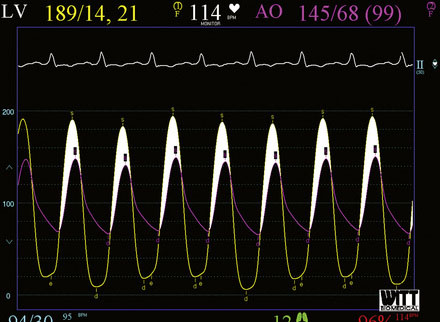CASE 49 Aortic Balloon Valvuloplasty
Cardiac catheterization
Cardiac catheterization consisted only of a hemodynamic study in order to avoid worsening renal function from exposure to iodinated contrast agents. Her baseline hemodynamics revealed severe heart failure with a mean right atrial pressure of 11 mmHg, a pulmonary artery pressure of 53/27 mmHg and a mean pulmonary capillary wedge pressure of 33 mmHg. The cardiac output was 4.8 L/minute. Using a straight wire to cross the aortic valve, the operator placed a dual-lumen pigtail catheter into the left ventricle and measured a baseline peak-to-peak systolic gradient across the aortic valve of 94 mmHg, yielding a calculated valve area of 0.7 cm2 (Figure 49-1). An extra-stiff, 0.038 inch Amplatz guidewire was advanced through the pigtail catheter into the left ventricle and the pigtail catheter removed. The originally inserted 6 French arterial sheath was replaced with a 12 French sheath, and a 5 cm long by 18 mm diameter valvuloplasty balloon was advanced and centered across the aortic valve. Using a 30-cc syringe filled with dilute contrast, the balloon was inflated by hand (Figure 49-2 and Video 49-1). The balloon was deflated and removed over the guidewire and replaced with the dual lumen pigtail catheter. The operator noted that the transaortic peak-to-peak systolic pressure gradient only diminished by 20 mmHg. Thus, a 5 cm long by 22 mm diameter balloon was advanced, centered across the aortic valve, and inflated. The transaortic pressure gradient after the second balloon inflation is shown in Figure 49-3, with the peak-to-peak systolic gradient noted to fall to 44 mmHg, yielding a valve area of 1.1 cm2.






